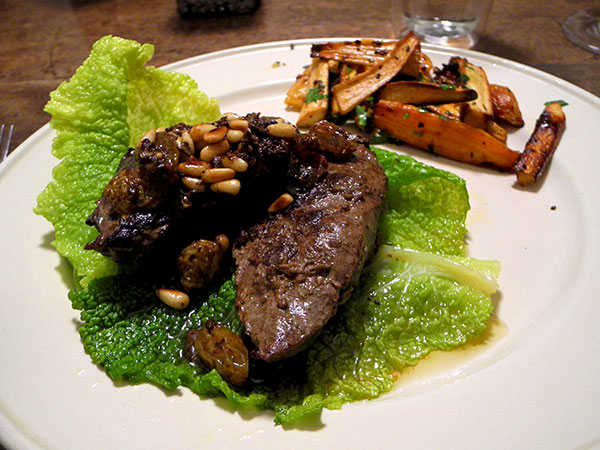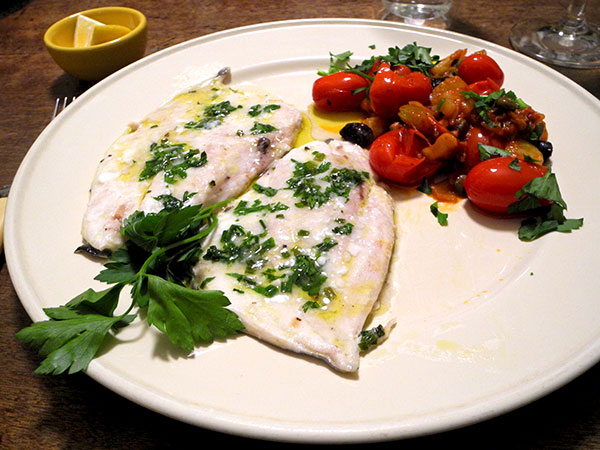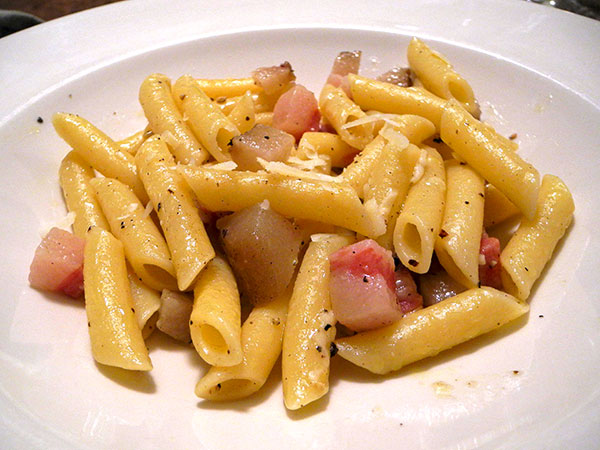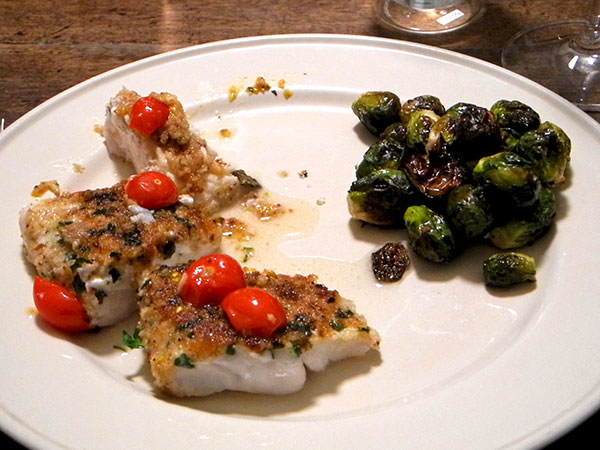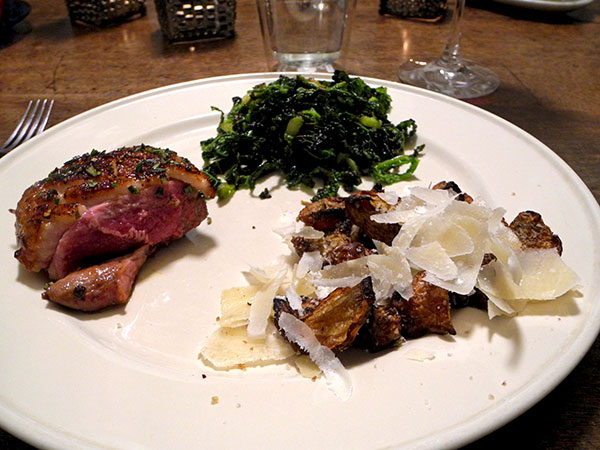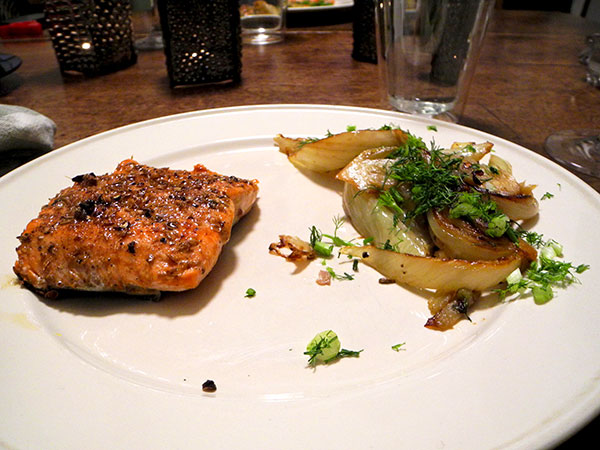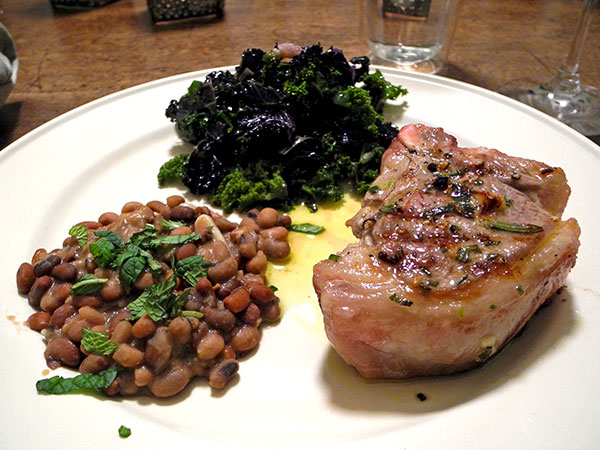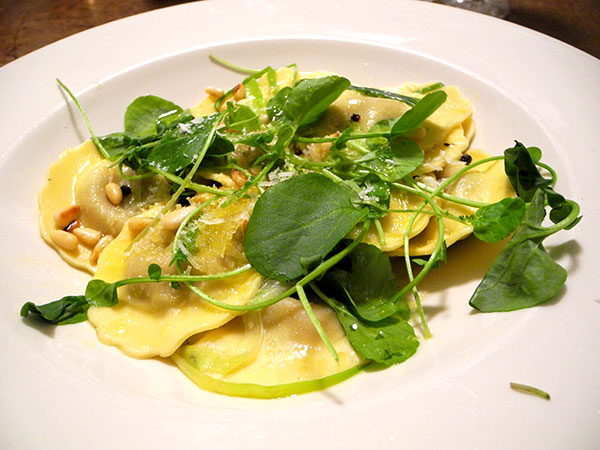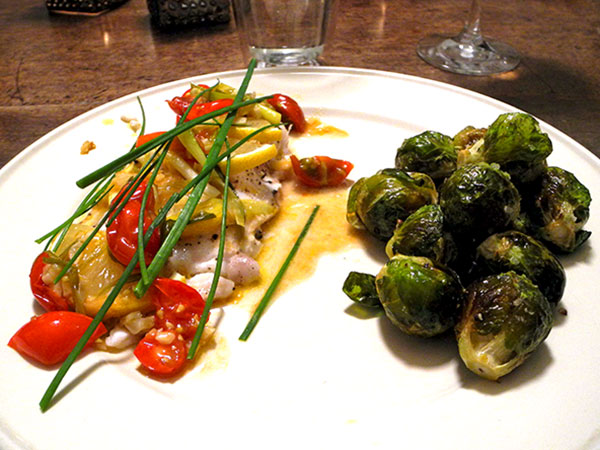I needed a bit of liver as one ingredient of the sturdy sauce I wanted to prepare for a hare two weeks ago. I was in the Union Square Greenmarket picking up ingredients for that special meal, one of which was indicated in the recipe as calves liver, when I realized there was no veal to be found, and definitely no veal liver to be had there. But there were several stalls selling lamb. One of them had lambs liver. For me the big surprise was the size of each vacuum package. The smallest weighed more than a pound and a half, and that was from one rather small lamb. After cutting them into three pieces and using one section in the hare recipe, I repackaged the other two (9 ounces each) and put them in the freezer.
Last night was the first opportunity I had to use one of them as the centerpiece of a dinner itself. I used a lamb offal recipe I think I could describe as originating, appropriately, in the British north, Lincolnshire to be specific. The chef is Dominic, of Beaulieu Kitchen. I have another terrific-looking recipe, which I found elsewhere. It involves two kinds of mushrooms, and some Madeira, and it will star the package remaining in the freezer. After a decent innards interval, I expect to be out shopping for fungi at the Greenmarket.
- lamb liver (9 ounces) from 3-Corner Field Farm, sautéed only until sealed and a bit crispy on both sides, removed from the heat, butter added, the pan placed in an 400º oven for a few minutes, the liver then removed, set aside and kept warm, balsamic vinegar added and reduced over high heat almost to a syrup, the flame turned down, and butter, toasted pine nuts, and sultanas (previously soaked in warm water), added and stirred, the liver then returned to the pan and moved around in the sauce just before it and the meat were spooned onto a bed of Savoy cabbage from from Hoeffner Farms (earlier been steamed for 3 or 4 minutes) which had been warmed up just before being placed on the plate
- carrots from Rogowski Farm and parsnips from Migliorelli Farm, both cut as French fries, tossed with olive oil, white balsamic vinegar, minced rosemary from Queens County Farm, salt, and pepper, then spread evenly onto a ceramic oven pan and roasted in a 425º oven for about half an hour
- the wine was a Spanish red, Otonal Rioja Reserva Bodegas Olarra 2008
